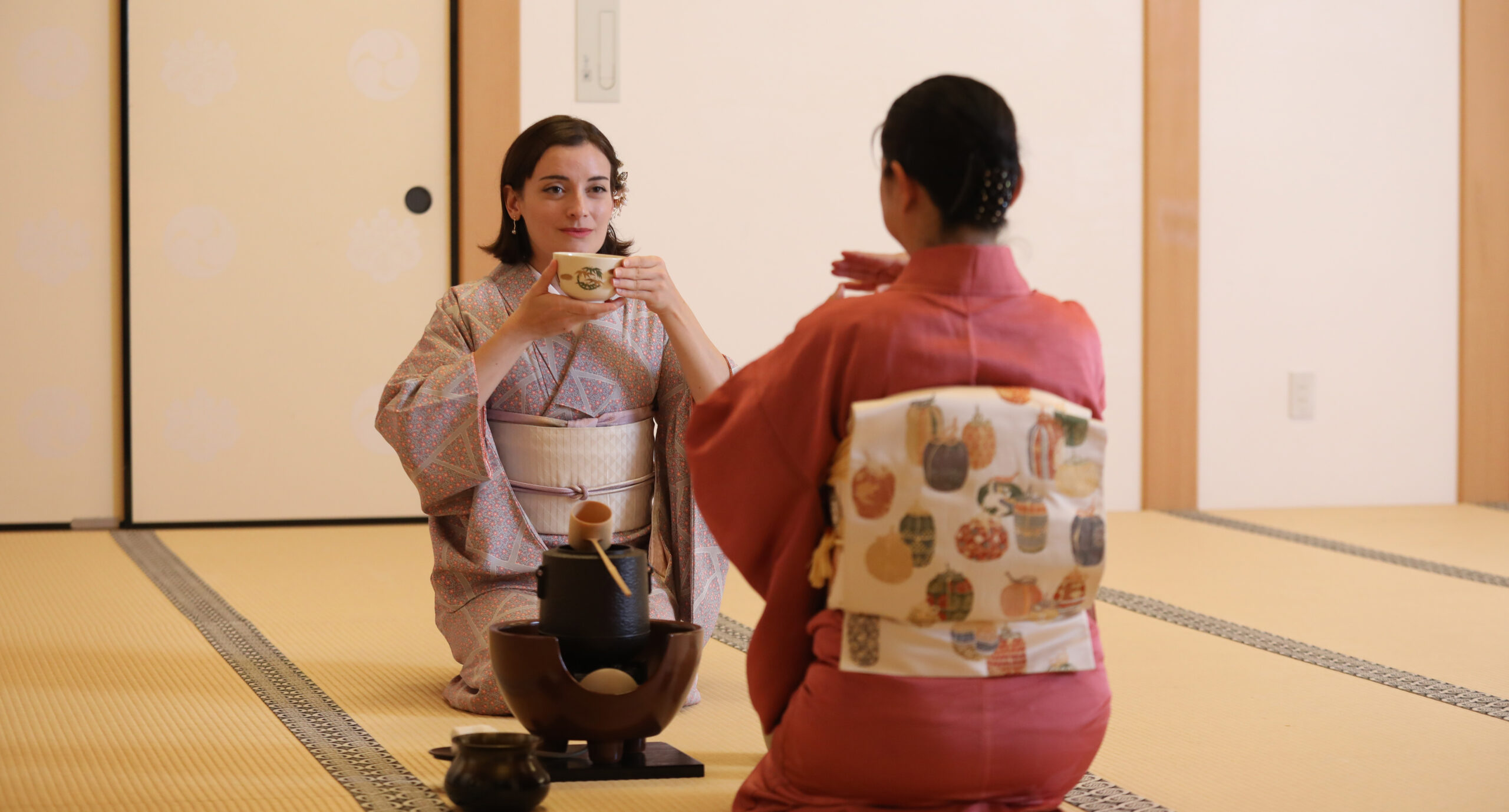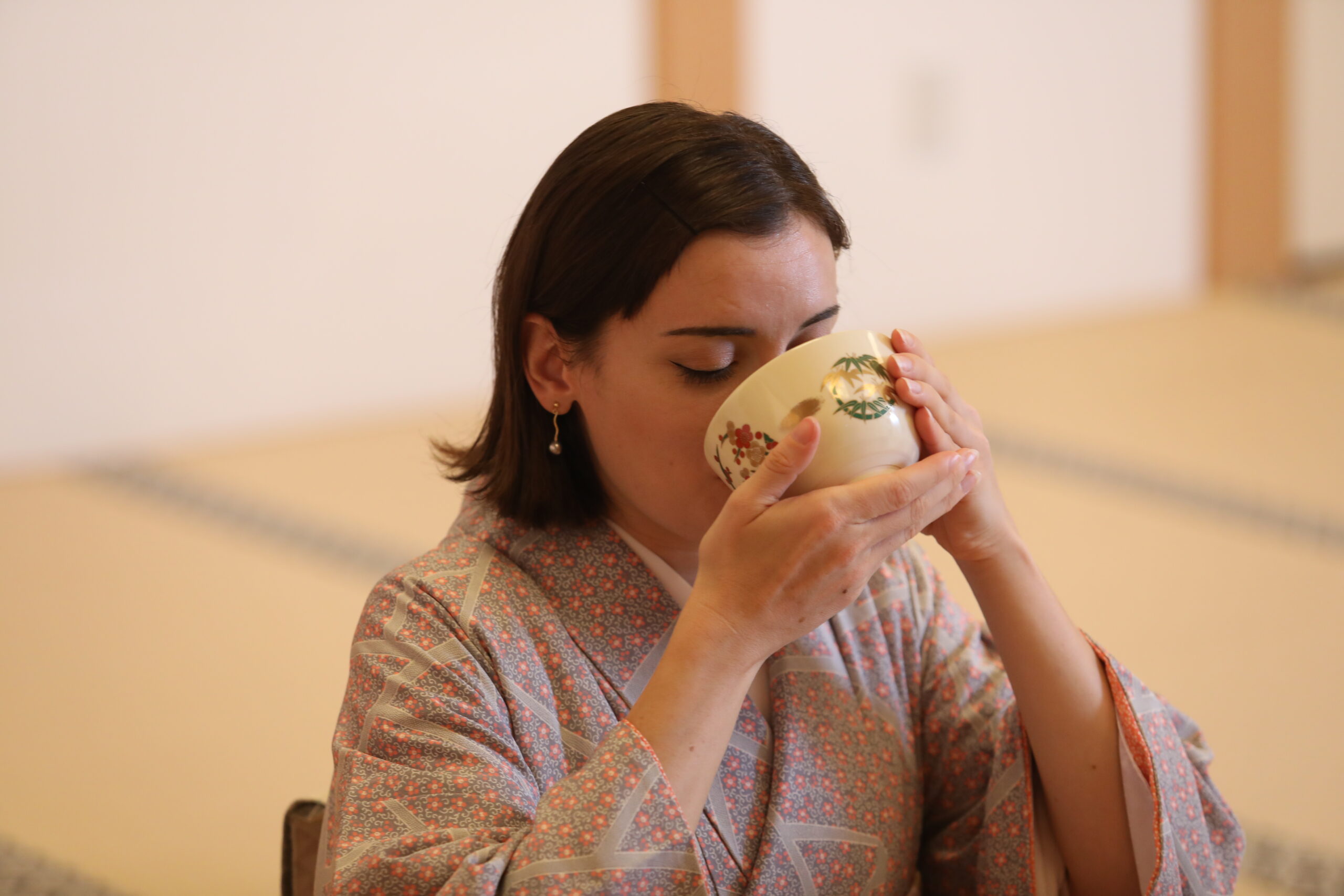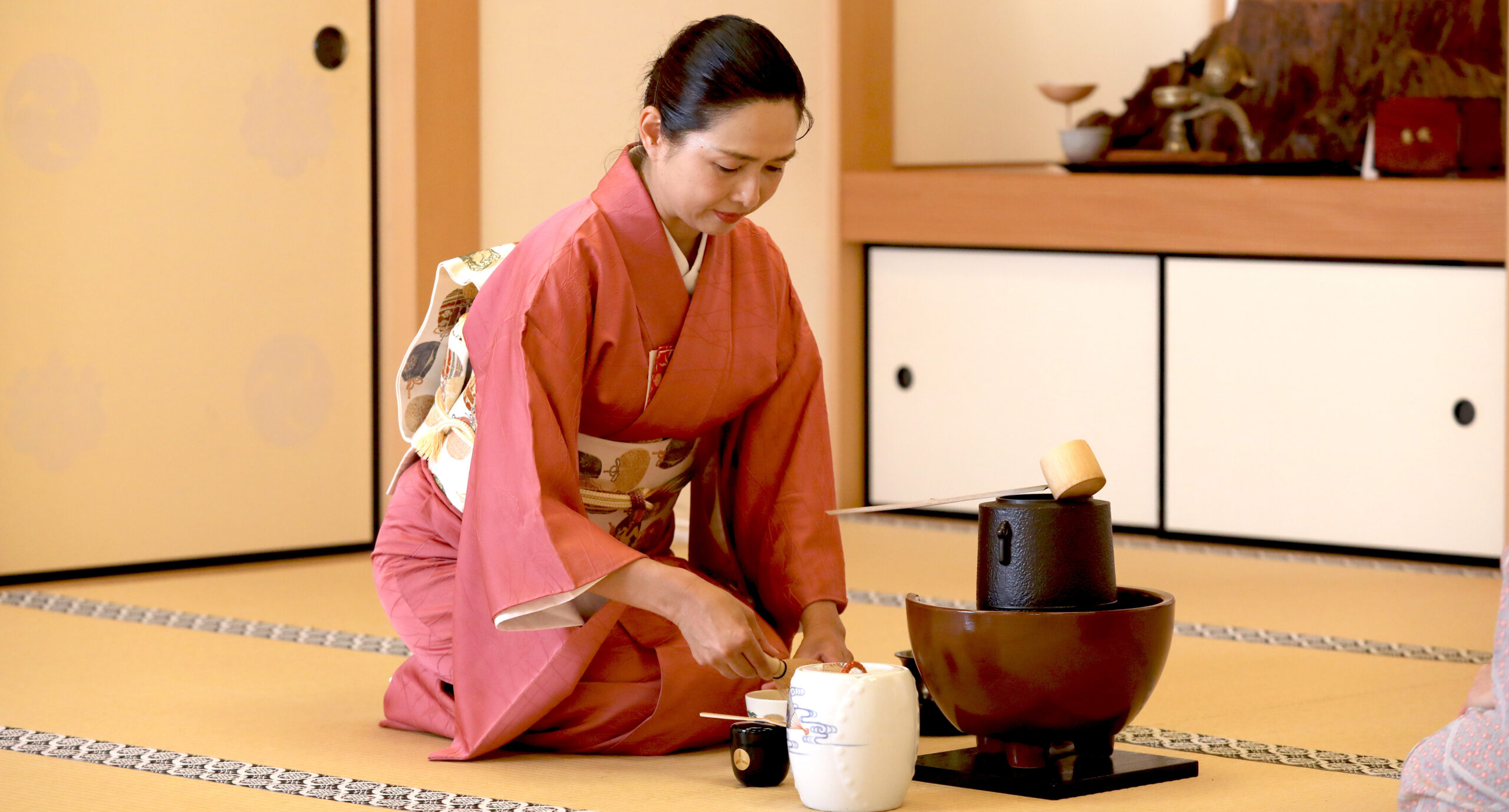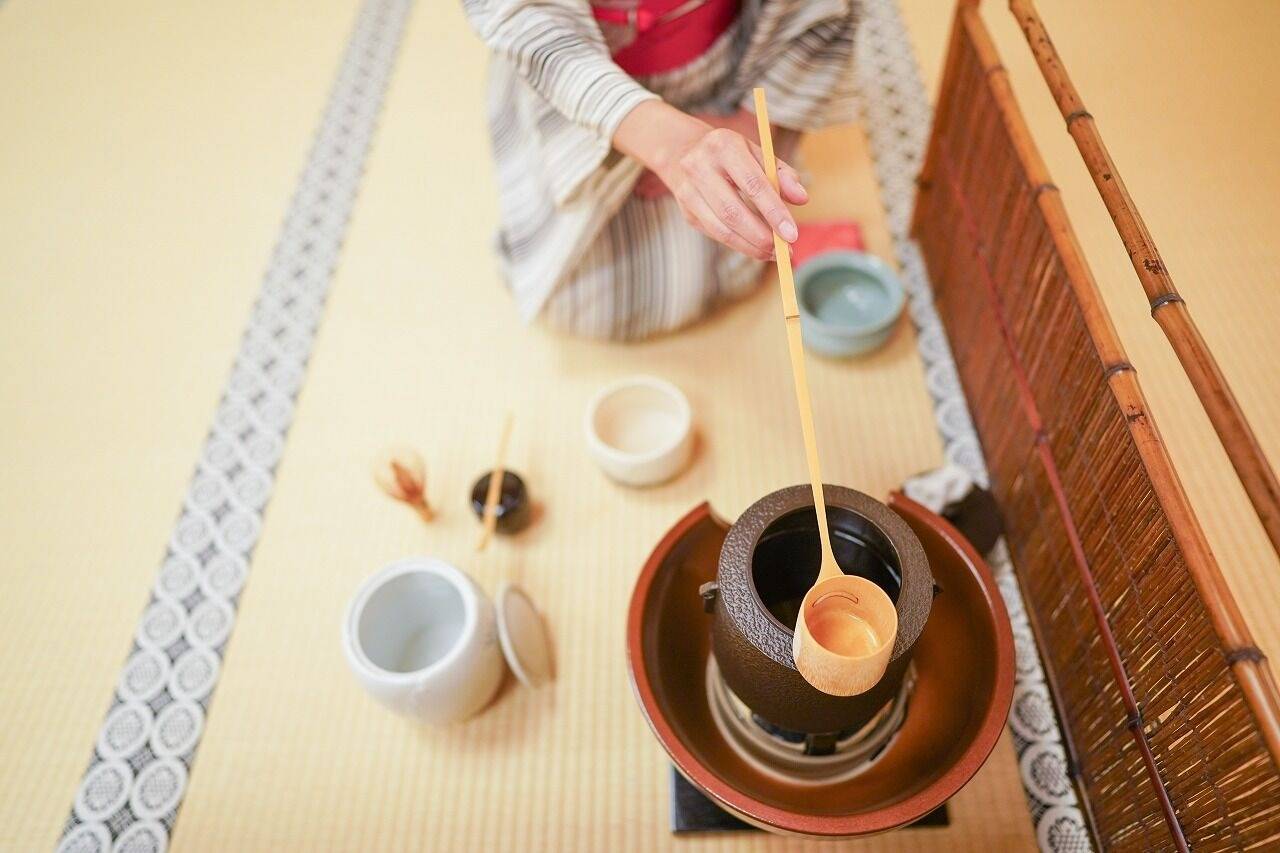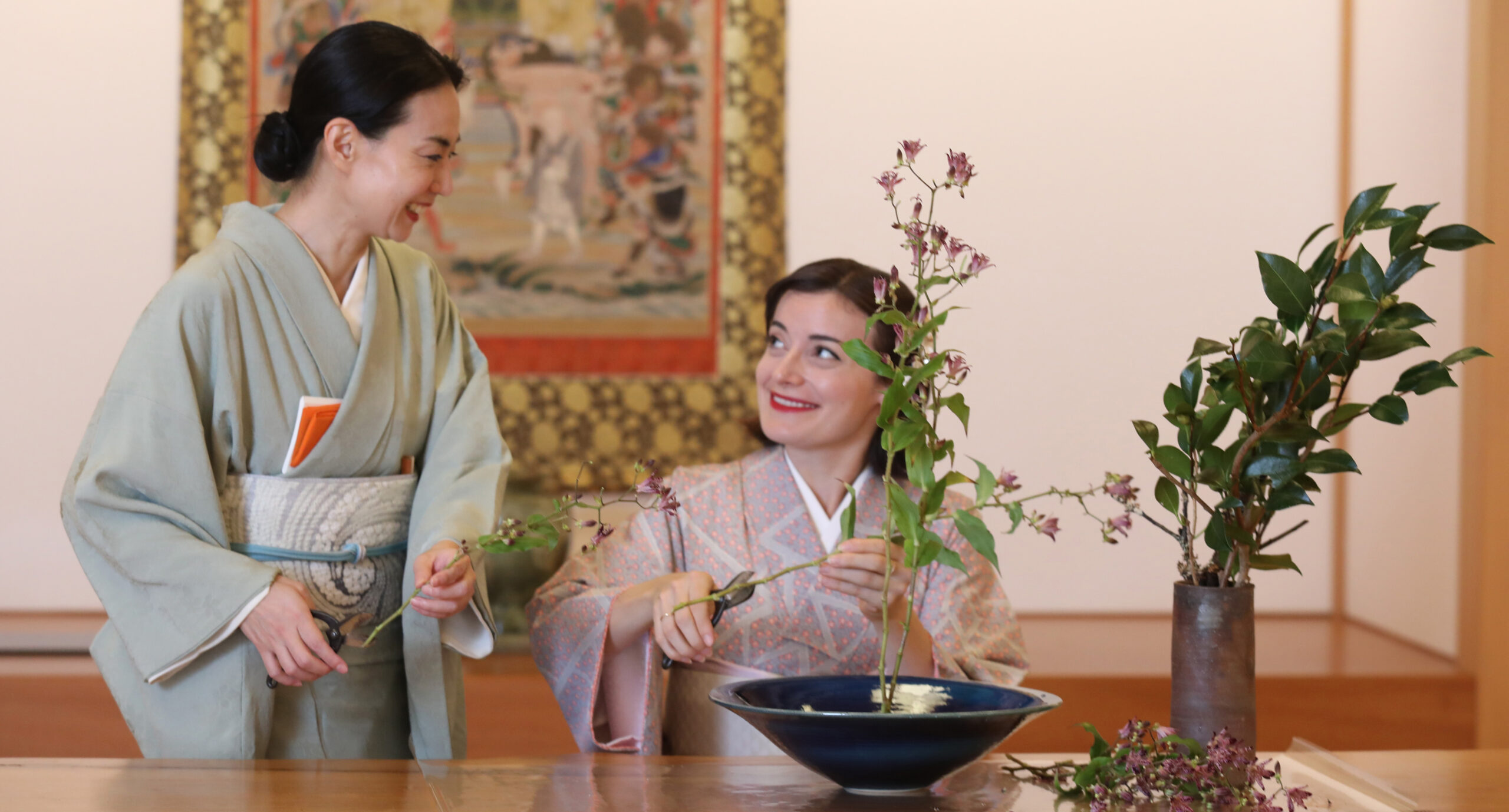Tea ceremony bowls tend to be the most precious utensils among all the tools. There are many rules on how to hold the tea ceremony bowl and how to place it on the floor. Winter bowls (tsutsu chawan) tend to be deep to keep the tea warm and the summer bowls are shallow to match the season. Cherry blossoms and fall leaves are often reflected on tea bowl decorations.
Interestingly, Japanese broken tea bowls are usually not thrown away; they are fixed by using urushi and the cracks are covered by gold powder. This process symbolizes the importance of accepting our scars and celebrating them.
The most famous Japanese tea bowl is the “raku chawan” made by the Raku family for the past 400 years. What makes Raku chawan unique is that the kiln is prepared and put to rest for 70 years to be used by future generations from the same family. It is hand made without using molds, so each raku chawan is unique and very precious. An average black raku chawan costs more than $1000, and there is usually a couple of years waiting time.

